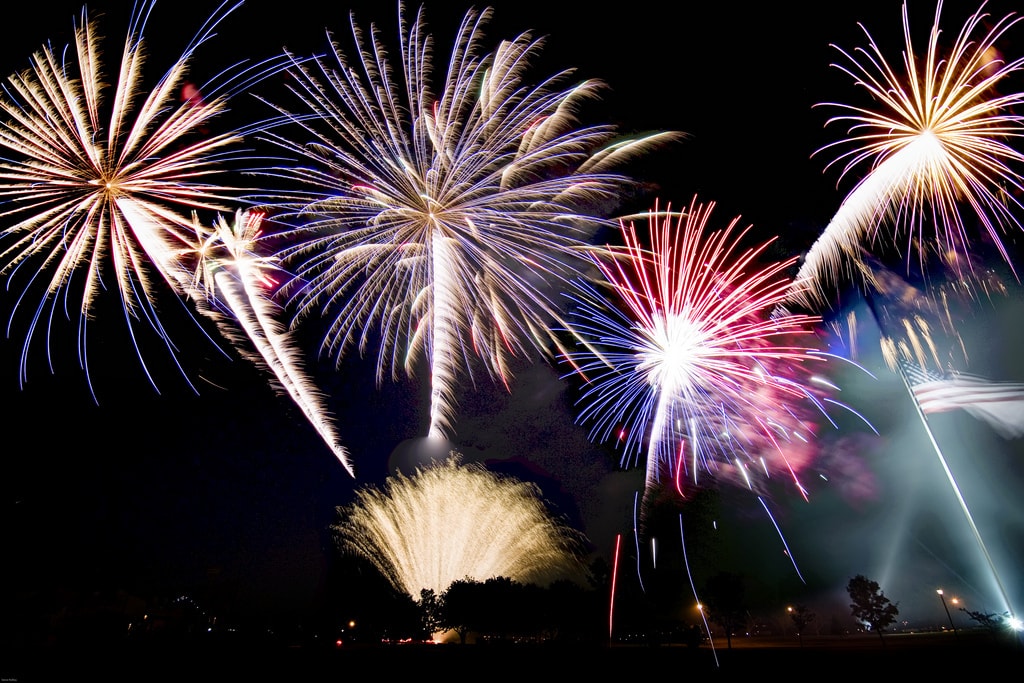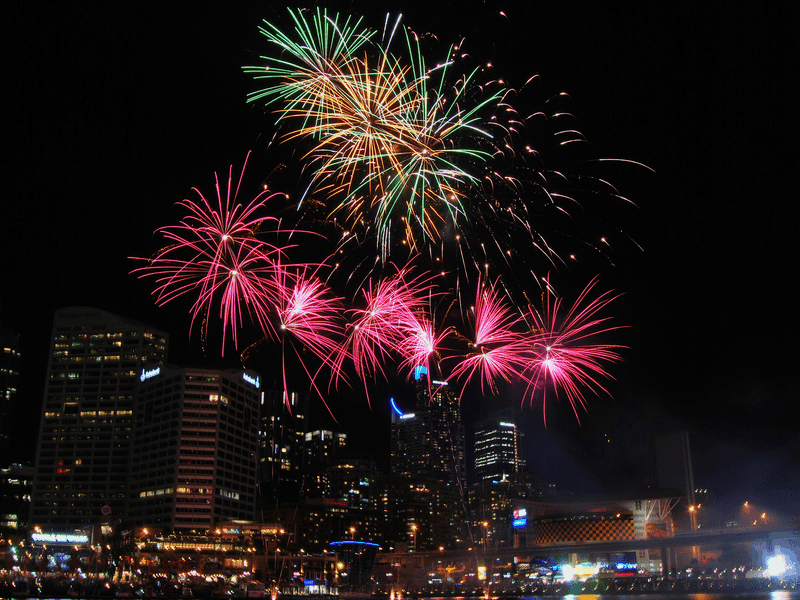Fireworks photographs have a special charm. They might seem like "typical" photographs, but the truth is that not everyone can take a correct photo of fireworks.
Taking such a photo is challenging for the beginning photographer, as well as being a good way to train yourself on the manual and semi-manual controls of your DSLR.
If you want to get started in fireworks photography, today's article will give you some keys, tricks and tips to achieve this goal. But if what you like is night photography in general, take note of this mega guide with tips, tricks and a lot of inspiration.
NECESSARY MATERIAL FOR A GOOD FIREWORKS PHOTO
- Stable tripod: Night photography (including fireworks) requires long exposure times, which would normally cause shake and shaky photos . To avoid any possibility of vibration a tripod is essential. If you are not going to use a tripod, you do not need to continue reading, everything else will be useless.
- Remote shutter release: Even if a tripod is used, the camera may suffer micro-vibrations due to the moment of shooting. Although we try to shoot subtly, something will always be noticed. To avoid this it is recommended to use a remote release. On the other hand, this small accessory will help us to start and finish the shot, prolonging it for as long as we want.
- Piece of black cardboard: or any element that serves to cover the objective during the time between one firework and another. We can even use the lens cover itself.
- A generous memory card , or two.
- Battery well charged.
STEPS TO PHOTOGRAPH FIREWORKS

- A successful fireworks photo starts with a good location . The perspective from which we are going to shoot will be key. We will have to ask ourselves certain questions well in advance: where do I get the best perspective from? If I choose to shoot from a certain point, what background elements does that point offer me (mountains, buildings, etc.)? Arriving early at the event location and trying to find out where the fireworks will be shot from might help us properly answer all of these framing and composition related questions.
- Smoke is a drawback present in all fireworks shows. Keep this in mind and when planning the point from which you are going to shoot, try to position yourself downwind, so that the wind blows in the same direction that you take the photo and not against it. In this way, if there was smoke, it would go further and not obstruct the photo.
- When the time comes, we will plant our tripod and prepare the settings of our camera as I describe in the next point.
- The first step in the preparation of our camera is the choice of a suitable focal length . All lenses and all focal lengths can work, although it is true that because the path of fireworks is often unknown and quite unpredictable, it is recommended to use a small focal length. Something between 16 and 24mm would work perfectly and help us frame the firework and the whole scene is its totality.
- If your camera or objective has an image stabilizer, deactivate it . Image stabilizers slightly rob us of photo quality in exchange for stabilizing the image. Since we will be using a tripod and a remote shutter release, we can do without the stabilizer.
- Turn off the flash . Its function is useless when we photograph distant things. If you see that it opens by itself, please disable it. Not only will it not help you, but it will also make your photos look worse.
- Normally increasing the ISO value helps to get more light in low light situations. In our case we do not have this problem since we will take long exposure photos where we end up obtaining all the sufficient light without resorting to the ISO. So almost mandatory advice: keep your ISO as low as you can, always around 100 .
- Select the manual mode of your reflex camera. Yes yes, full manual. We have already had enough of the automatic mode, and we have already experimented enough with the semi-manual modes . Now it's time to work in full manual mode. Do not panic, in the following steps I will give you the exact guidelines that you have to follow. Remember that manual mode is selected on the camera dial, with the "M" symbol on most cameras. The manual mode basically has two aspects that are the ones that we will adjust next: the opening of the diaphragm on the one hand and the shooting speed on the other hand.
- Choose an aperture setting between f/8 and f/18 . Estimate approximately how long each firework lasts from its firing to its extinction. You can select that time as the shutter speed and leave it as the default, so that every time you see a firework go off you release the shutter and wait for the camera to finish shooting in the time you have planned.
- A much better way to control the rate of fire is by using the BULB function . This function allows us to freely and independently select when the shot starts and when it ends, all through our remote trigger, in this way we can start the shot and finish it ourselves as soon as the light has gone out, thus not having to wait 5 or 10 seconds that otherwise we would have programmed. To use the BULB mode, my favorite, we will first set the shooting mode to "Remote shutter", and then we will select a slow shooting speed, the slowest possible. Most cameras, when reaching a speed of 30 seconds, automatically show us the "BULB" indicator on the screen, which indicates that we are ready to press the shutter when we want to start recording or recording the image and press it again when we want to finish the record.
- If you want to record several fireworks that take place over time in the same photo, all you have to do is release the shutter and let the camera record a long sequence of fireworks for a minute or two. While doing this, using the lens cap, your hand, or a piece of black cardboard, you have to cover the lens during timeouts, times when there are no fireworks.
Bonus Track: Contrary to what many people think, the most beautiful thing about fireworks is not their colors, but rather the landscape in which they occur. Keep this in mind and find a good location. You will succeed.


